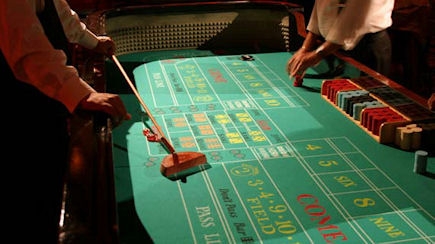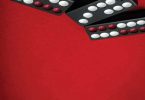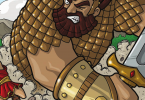Welcome to Part D of our craps series.
We are going to explain proposition bets, or ‘prop’ bets as they are more commonly known. They are found in the centre of the craps table and many players like these bets because they frequently have large payouts, have fun names and are an exciting way to play the game. This article will explain the various types of prop bets including the field bet, the hardways bet, any seven, any craps, the horn bets, big 6 and big 8 and the big/small bet.

I should warn you that the prop bets are amongst the statistically worst bets for the player in the casino, so use them only for a bit of fun with the odd piece of smash; it would not be wise to bet serious money on them. For those of you that don’t know, ‘smash’ means small, low denomination chips. ‘Smash’ is the casino equivalent of the more widely-used term ‘shrapnel’, which means coins of low value.
Betting the ‘field’ is a one roll bet that the next number on the dice will be a field number. The field numbers are 2, 3, 4, 9, 10, 11 and 12, that is the top 4 numbers and the bottom 3 numbers. Remember that the 5 is not in a field number and you’ll often hear the stickman yell out “5, no field 5” when a 5 is rolled. The field bet is found on each end of the layout between the ‘come’ area and the ‘don’t pass’ area. The 3, 4, 9, 10 and 11 pay even money if rolled. Hitting 2 or 12 on the dice pays odds of 2 to 1, although some casinos get generous and offer 3 to 1 for the 12. Field betters get a result on every single roll, so this is a bet taken by players who want constant action, or a bet that is very simple to understand.
The ‘hardways’ bets are located on the table in front of the stickman. The hardways are made up of the point numbers that are formed from paired dice. For example hard 4 is a pair of 2s, or if you like double 2, which we write as 22. Hard 6 is 33, hard 8 is 44 and hard 10 is 55. A hardway can only come one way (hence it is called the hard way). For example, a dice total of 8 can come in a number of ways: 26, 35, 44, 53 or 62. Only one of those five ways, the 44, is a pair and therefore counts as the ‘hard way’ to get an 8. The other ways (26, 35, 53 or 62) are considered the ‘easy ways’. The numbers 2 (double 1) and 12 (double 6) are not considered hardway combinations as they are the ‘only’ way to roll those totals.
When you bet on a specific hardway combination you are betting on the hardway being rolled before a 7 or the same total an ‘easy’ way. For example if you bet on hard 6 you will win if hard 6 (33) is rolled before a 7 or an easy 6 (15, 24, 42 or 51). If any other number is rolled the bet neither wins nor loses, but stays alive for the next roll. The payoffs for the hard 6 and hard 8 are 9 to 1 and the payoffs for the hard 4 and hard 10 are 7 to 1. These bets are mathematically not the best bets at a craps table but they are probably the most exciting and popular of the prop bets. These bets have big payoffs and hitting a few hardways can see the chips in your rail grow very quickly.
The ‘any seven’ bet is a one roll bet that the next number will be a 7. It really is as simple as it sounds! It pays 4 to 1.
‘Any craps’ is a one roll bet that the next number will be ‘craps’; that is 2, 3 or 12. It pays 7 to 1. There is also the “C & E” bet which is made in the little circles marked C & E down the side of the prop betting box in the middle of the table. This is a two unit one roll bet and when you have a C & E bet the dealer will place your chips in the circles that correlate with your position on the table. You are betting on ‘C’ which is any craps number and ‘E’ which is the 11. If craps comes up it pays 3 to 1, an eleven pays 7 to 1.

The ‘horn’ bet is a one roll, four unit bet on four numbers: 2, 3, 11, and 12. If you roll any of these four numbers the bet wins. The horn pays 15 to 1 if the 3 or 11 is rolled, and 30 to 1 if the 2 or 12 is rolled.
There is also the horn high bet which is similar to horn bet except you are placing an extra unit on your designated ‘high’ number. This bet is made in increments of 5 units and has one unit on three of the numbers and two units on the designated high number. The ‘horn high yo’ for example has 1 unit on the 2, 3, 12 and 2 units on the yo (or 11). Again the payouts are 30 to 1 or 15 to 1 depending on which number hits. Remember to always use the expression ‘yo’ or ‘yo-leveen’ to indicate the number eleven at a craps table, because it’s considered bad luck to say ‘eleven’ because that word can sounds like the devil number: seven. Apart from on come-out rolls, a seven usually wipes the layout and everyone loses many bets.
A ‘single horn’ bet is simply a bet on any one of the horn numbers you choose. A winning bet on the 2 or 12 pays 30 to 1 and a winning bet on the 3 or 11 pays 15 to 1.
‘Big 6’ and ‘big 8’ are found in the front corner of the layout, although they are completely missing from some craps tables in Macau or even replaced by a big/small bet (explained later). Betting on them is very simple. When you bet on ‘big 6’, you are betting that a 6 will be rolled before a 7. When you bet on ‘big 8’, you are betting that an 8 will be rolled before a 7. The payout for this bet is even money. The only difference between this bet and ‘place betting’ the 6 and 8 is the payoff. If you place bet on either the 6 or 8 you will be paid at 7 to 6 when you win. Clearly getting paid 7 to 6 is better than being paid even money for the exact same proposition. Experienced craps players therefore never bet on ‘big 6’ or ‘big 8’, considering it a sucker’s bet. If you see a ‘donkey’ betting on big 6 or big 8 you can have a quiet chuckle to yourself!
Some Macau casinos have a ‘big/small’ bet on the area of the layout which normally houses the ‘big 6’ and ‘big 8’ bets. Big/small is very simple, and just like big 6 and 8 it pays even money. It is a one roll bet that the next number will be a small number (2, 3, 4, 5 or 6) or a big number (8, 9, 10, 11 and 12), depending on whether you bet on ‘big’ or ‘small’. If a seven is rolled both ‘big’ and ‘small’ lose.
Overall the prop bets are not the best bets on the craps table but they are exciting to bet on due to their higher payouts. I must admit I am a sucker for the prop bets even though I know they aren’t the best odds for me. Next time you’re playing craps have a few prop bets and show off how much you know about the more unusual bets of the game!







